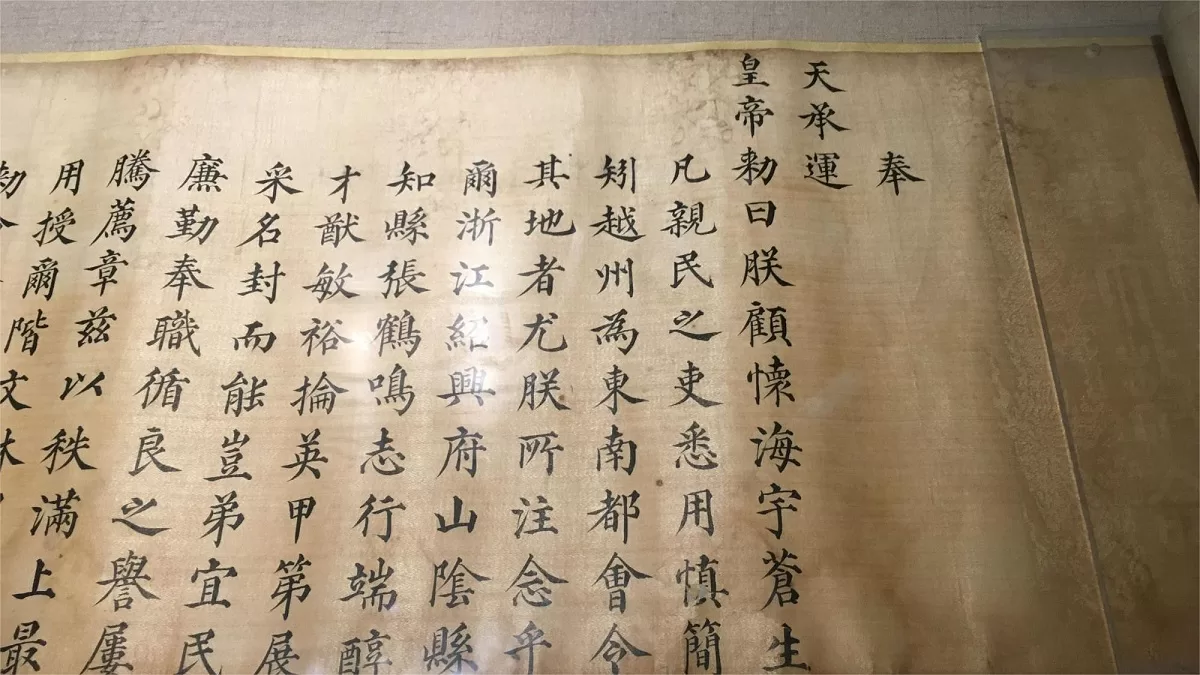The Xuzhou Imperial Decree Museum (徐州圣旨博物馆), situated in the Jiuli Mountain Han Culture Tourism Zone, is a distinguished institution composed of two main exhibition areas: the Main Exhibition Building and the Dianshi Garden. Boasting a collection of over 30,000 items, the museum proudly displays more than 5,000 precious cultural relics. The Main Exhibition Building focuses on three major themes: “Bestowed by Heaven,” “Triumph in the Imperial Examination,” and “Extensive and Profound Collections,” with a total exhibition length of 1,060 meters.
Table of Contents
- Basic Information
- Location and Transportation
- Highlights of Xuzhou Imperial Museum
- Vlog about Xuzhou Imperial Decree Museum
Basic Information
| Estimated Length of Tour | 1 hour |
| Ticket Price | 80 RMB |
| Opening Hours | 9.00 – 17.00 |
| Telephone Number | 0086-0516-85881189 |
Location and Transportation
The Xuzhou Imperial Decree Museum is located in the Jiuli Mountain Han Culture Tourism Zone, situated at 3 Xiangwang North Road, Gulou District, Xuzhou City, near the Guishan Han Dynasty Tomb. To get there, you can take bus 37 and get off at Guihan Han Tomb Stop (龟山汉墓站).
Highlights of Xuzhou Imperial Museum
Bestowed by Heaven

In the “Bestowed by Heaven” exhibition hall, visitors are greeted by an awe-inspiring display of imperial edicts. Notably, there is a monumental decree from the fourth year of the Ming Dynasty’s Tianqi era, measuring an impressive 4 meters in length and 2 meters in width. Embellished with four layers of golden inscriptions, the calligraphy on this decree is unparalleled, serving as an exemplary model of regular script. Surrounding the text are 99 hand-painted golden dragons, adding an extra layer of grandeur. Another highlight is the edict from the sixth year of Tianqi, featuring a seven-colored crane embroidered on satin, spanning 4.6 meters and adorned with 434 meticulously written characters. This decree has withstood the passage of time, surviving the transitions between the Ming and Qing dynasties, historical conflicts, and the ravages of the Cultural Revolution, making it a rare and precious artifact that has retained its brilliance for nearly 400 years. Additionally, a hand-painted decree with dragon motifs from the sixth year of the Xianfeng reign in the Qing Dynasty is showcased, representing a unique piece associated with the military honors bestowed upon General Kui Ding and his son Yu Gang.
Triumph in the Imperial Examination

In the “Triumph in the Imperial Examination” exhibition hall, an extensive collection of materials related to the imperial examination system is on display. This includes examination questions and papers for the titles of Xiucai (successful candidate in the county-level examination) and Juren (successful candidate in the provincial-level examination), as well as palace examination papers for those who achieved the top rank in the imperial examination system. The exhibition also features more than a hundred calligraphy and painting works by successful candidates, including those who attained the title of Zhuangyuan (top scorer), as well as instances of cheating tools used by examinees during the imperial examination. Among the showcased items are two miniature editions of the “Four Books and Five Classics,” each the size of a palm but impressively engraved with nearly 200,000 characters, each measuring just 1 millimeter square, showcasing exceptional craftsmanship.
Extensive and Profound Collections

The “Extensive and Profound Collections” section of the museum exhibits a diverse array of artifacts, including pottery, bronze ware, jade articles, ceramics, and ancient costumes. Notable pieces include the West Zhou green jade sword, the Western Han dragon and phoenix pendant, the Eastern Han bronze money tree, the Eastern Han singing and dancing figurine, the gilded stupa from the Liao and Jin dynasties, and the dragon robe from the Ming and Qing dynasties.



What an eye-opening experience! Apart from various imperial edicts, I also saw an imperial edict that was graffiti during the Cultural Revolution. The last one was a cheat sheet for the imperial examination, written on a large piece of paper with over thirty thousand words. I admire the ancient scholars who had the skill to write such small characters.